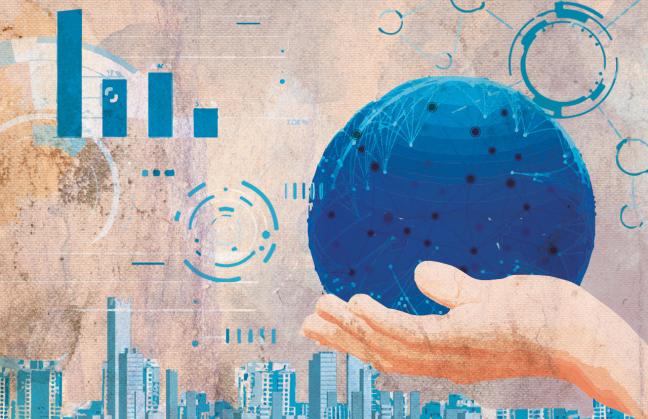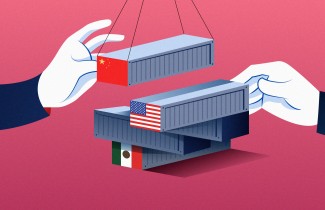What to Expect from Global Markets in 2020
An overview of this year’s main economic and investment trends

The global economy is experiencing a whirlwind of transitions that will eventually affect everyone. These transitions are not new, but the will have a greater impact in business and society: automation will be highly disruptive in terms of employment and productivity; population young to old ratio, which in Mexico is set to reach its peak in less than five years; generational layers, with new generations entering the job market, such as generation Z, while others, such as millennials, are reaching midlife; and a sense of upper echelon exploitation felt by the masses, a transition that portends most enduring and strong effects in the social fabric.
In spite of these trends, the world is currently enjoying a brief period of stability. Nor the unemployment rate, interest rate levels, inflation or fiscal deficits are at alarming levels. Nevertheless, there are still some global economic risks in 2020:
- The growth of the Chinese GDP is declining beyond expected rates. Automotive industry, investments on industrial equipment, exportation, and private companies’ profitability have performed at alarming rates over the last three quarters. At march 2020, the coronavirus extends these concerns even further.
- A solvency crisis in High-Yield (HY) issuance in small and medium businesses in the U.S., particularly in oil and gas shale industries. This creates an alarming situation for a sector in particular, and it is pervading other sectors using the same sort of investment vehicle, and even to other regions.
- Trends in debt indicators regarding fragile emerging economies have substantially escalated, which destabilizes the flow of capital. Argentina, Brazil, Turkey, South Africa, and India have are at a disadvantage on this matter.
- The regulatory agenda concerning CO2 and climate change has a greater impact on certain sectors, particularly the automotive, affecting production, pricing, employment and extending industry margins.
- The rate of workforce participation, which has been growing at a slower rate in OECD countries throughout the last two quarters, is beginning to fall, originating shortcomings in the aggregate labor supply, narrowness and inflationary pressure.
- Another low-probability risk is the unexpected increase in inflation which causes a rise in interest rates on behalf of monetary authorities due to the growth of public debt in OECD countries.
The world has become dependent on monetary policy
Future markets expect interest rates to remain below the economic growth rates for several more years. For example, the long-term target set for the Fed rate was reduced from 3 % to 1.5 %, and most of the OECD countries follow suit. One of the reasons behind this is the economies’ high sensibility to the rates increases.
OECD countries had balance sheet of 20.5 trillion dollars in their central banks by the end of 2016, when the quantitative easing (QE) strategy started, which is the approach that is currently being applied (as a reference, the global GDP will be closing this year with around 87.5 trillion dollars).
So, what has been the expansionary monetary policy? The central banks’ balance sheets of those economies that conducted the QE strategy had an overall growth of 12 trillion dollars. For example, in the U.S., the U.K., the E.U., and Japan, there was a growth from 3.7 trillion in 2008 (8% of their GDPs) to 14 trillion in 2019 (33% of their GDPs). It is expected that 2020 and 2021 will see further growth.
A very tangible risk of the (unprecedented) QE policy is that perception of money as a safeguard of value could fall (due to abundance), which may result in the search of other goods that could substitute its function, mainly in the form of real assets such as lands and buildings, and also stock market shares, gold and metals, and even bonds and credit.
Big Tech and the stock market potential
In this global trading scenario, it is expected that this year’s earnings per share (EPS) will grow approximately from 3 to 5% in the U.S. (which could increase to a positive scenario of 8% or 177 dollars per share in the SPX) in the base case. At the shock case, and after a correction of 15% on the stock market, EPS could have a negative impact of -4%.
There has never been a greater EPS gap between Big Tech companies (Facebook, Amazon, Google, Netflix, Microsoft, and other tech firms) and the rest of the SPX index, and there are only two ways to close it: either by increasing all of the firms’ profits as a whole, or by implementing a tighter regulation concerning Big Tech operations.
To put this scenario into perspective, in the course of the last five years the profits of American corporations have grown about 0%, while Big Tech’s profits have grown 38% , mainly due to buybacks, their aggressive accounting methods, and their tax strategies. Big Tech own a third of all profits on the index, which is also a sign that the economy is slowing down, since technology is the less regulated sector.
Strategic asset assignation for 2020
Given this situation and the various expected trends, the following facts seem to be a cautious guideline for portfolio formation:
- There is still a preference for shares over bonds because the 10yT spread to the equity yield remains positive, as well as the dividends yield itself.
- In the mid-term, an overweight (OW) on the U.S. stock market, but in the short-term, it will be more profitable outside the U.S. (EMxChina) due to the expected return and upside in yields.
- Investment on China’s stock market will greatly depend on their new economic policy performance through the first semester of the year and the turnout of the virus.
- OW in high dividend stocks, which still grows steadily.
- OW in the financial, manufacturing, consumer discretionary, and utilities sectors. Neutral stance in the IT, communications, health, and energy sectors. UW in Real Estate, materials and staples.
- In Europe, yield will probably be 6-8% in 2020, and the staples, materials, energy, and software sectors are particularly attractive, given a recovery from the china exposure.
- As for bonds, emerging markets’ local currency, sovereign and HY firms, still have the opportunity to generate yield and price appreciation. Treasuries are preferred over Gilts or Bunds.
- The HY sector would have to be thoroughly assessed to find specific opportunities since it is currently over-saturated with securities being sold at extremely high prices, in addition to high default risks, particularly in the energy, IT, and materials sectors.
This is a summary of the research paper Los mercados en 2020, you can download it full-length here.



